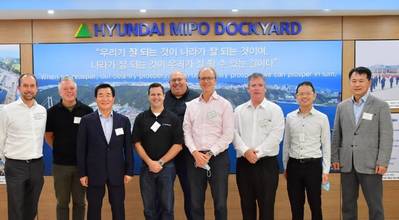Eastern Pacific Shipping Orders Four LNG Containerships for Crowley Charter
Singapore-based Eastern Pacific Shipping (EPS) said it has secured a contract from U.S.-based Crowley for the charter of four dual fuel liquified natural gas (LNG) powered containership newbuilds.
The 1,400-TEU vessels, which will be built by South Korea’s Hyundai Mipo Dockyard for delivery in 2025, will be deployed on Crowley’s U.S.-Central America trade connecting U.S. markets to Nicaragua, Honduras, Guatemala and El Salvador. Each ship will feature 300 refrigerated unit plugs.
Using LNG significantly lowers vessel greenhouse gas emissions, such as sulfur oxide, carbon dioxide and nitrogen oxide while eliminating particulate matter compared with conventional diesel fuel. In addition, these vessels will be fitted with high-pressure ME-GI engines from MAN Energy Solutions, reducing methane slippage to negligible levels and making these vessels the most environmentally efficient in their category.
“These four ships will play a significant part in driving Crowley’s strategic growth in our supply chain services for the U.S., Central America and Caribbean. In addition, the vessels use of LNG and emissions technology will advance the company’s commitment to innovation and decarbonization in the shipping industry as part of our sustainability strategy,” said Tom Crowley, company chairman and CEO. “As more companies diversify their supply chains using nearshoring and the resources of Central America, Crowley will enhance our end-to-end logistics services to be partners in their growth.”
“We are excited to develop our U.S. market footprint through these long-term time charters with such a reputable partner,” said EPS CEO Cyril Ducau. “Like EPS, Crowley enjoys a rich history and diverse business portfolio, but more importantly, their organization is driven by a vision to lead the industry’s decarbonization efforts. Once delivered, these vessels will be IMO 2030 compliant five years ahead of schedule and will play an important role as the world and industry transition to cleaner energy sources.”














